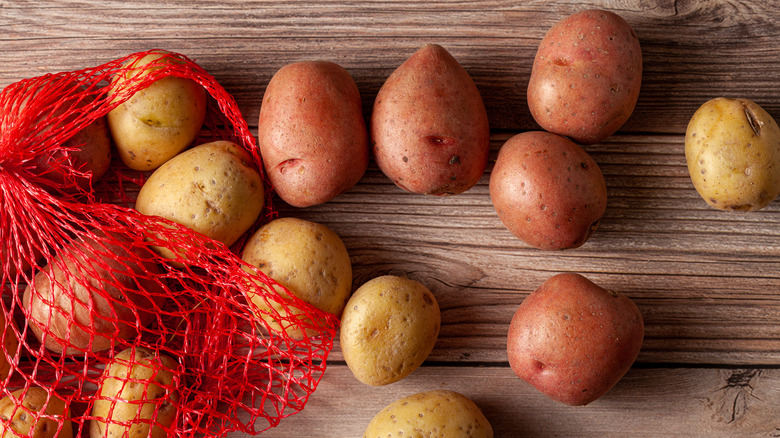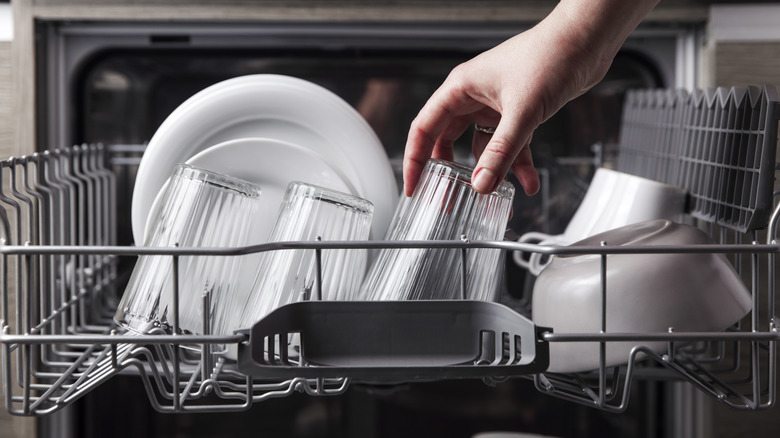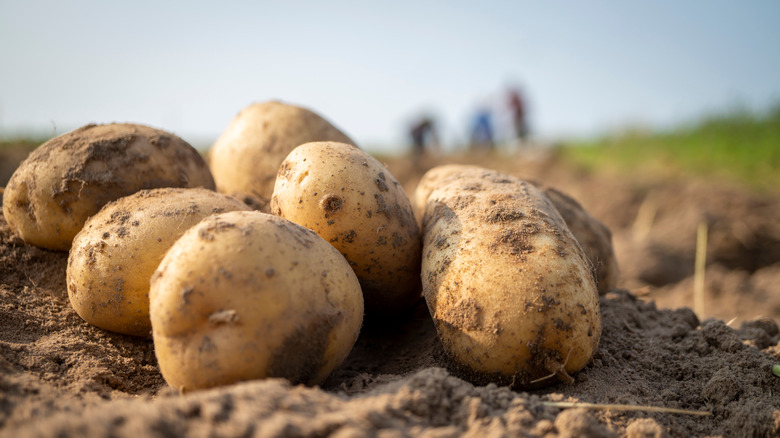Can You Really Cook A Potato In A Dishwasher?
With a few anecdotal exceptions, potatoes belong to the small class of vegetables that most people don't like to eat raw. This is largely due to their taste, which can be overwhelmingly bitter and starchy prior to cooking. According to the San Diego Union-Tribune, uncooked spuds may also be hard on our digestive tracts, as they contain "anti-nutrients" that can hinder the absorption of positive nutrients, which "nourish plants and animals to grow and live," per Harvard School of Public Health.
Unless you have a stomach made of steel, it's best to let your tubers undergo the Maillard reaction, which is a fancy term for the complexity of flavor that occurs when food is applied to heat. There are plenty of ways to cook potatoes, and they each yield a different texture. If you love a crispy-crunchy bite, you might slice your potatoes and roast them at a high temperature in the oven with olive oil and spices. If you prefer creamier potatoes, you might opt to boil them until they're tender enough to poke through with a fork. And if you're a fan of at-home cooking experiments, you might try putting them in the dishwasher.
Small slices are key
According to Our Everyday Life, a dishwasher cycle can clean your plates and cook your dinner at the same time. The outlet credits the unconventional method of dishwasher cooking to TV personality Bob Blumer, the former host of Food Network's "The Surreal Gourmet," "Glutton for Punishment," and "World's Weirdest Restaurants." Blumer's recipe for dishwasher-poached salmon, for example, "relies on the heat of your dishwasher's wash and dry cycles to lightly cook well-sealed salmon packets." Potatoes, which take longer to cook at usually require a higher temperature, the process of cooking them in a low-heat dishwasher requires some prep work.
First, to speed up their cooking time, Our Everyday Life says to quarter your potato lengthwise and cut the pieces into ⅛ -inch slices. Next, season the slices with your favorite flavors, be it ranch dressing or a tangy vinaigrette, before packing them in heavy-duty aluminum foil "folded into air-tight pouches." This part is important, as it prevents potato bits from decorating the inside of your dishwasher. Place the package on the top rack, turn off the machine's "energy-saving features," and run it on a wash-and-dry cycle.
Scrub your spuds by hand
Potatoes are grown in the dirt, which is why it's always a good idea to wash them before preparing them to eat. But contrary to the word of a popular hack that compliments dishwasher cookery, it's not a good idea to wash your potatoes on the top rack. Meredith Carothers, a Public Affairs Specialist at the Food Safety and Inspection Service, addressed the risks on TODAY. "Even though you aren't using dishwasher detergent, it's possible there is still detergent residue or even food bits from previous washes that could circulate," she said. She added that, because potatoes are porous, they can easily absorb "residue or bacteria" that can cause illness.
As we know from the gruesome aftermath of the 2018 "Tide POD Challenge," which saw teenagers daring each other to eat the pocket-sized laundry product, consuming detergent can be fatal. To be on the safe side, take a few extra seconds to peel your spuds or scrub them by hand.


